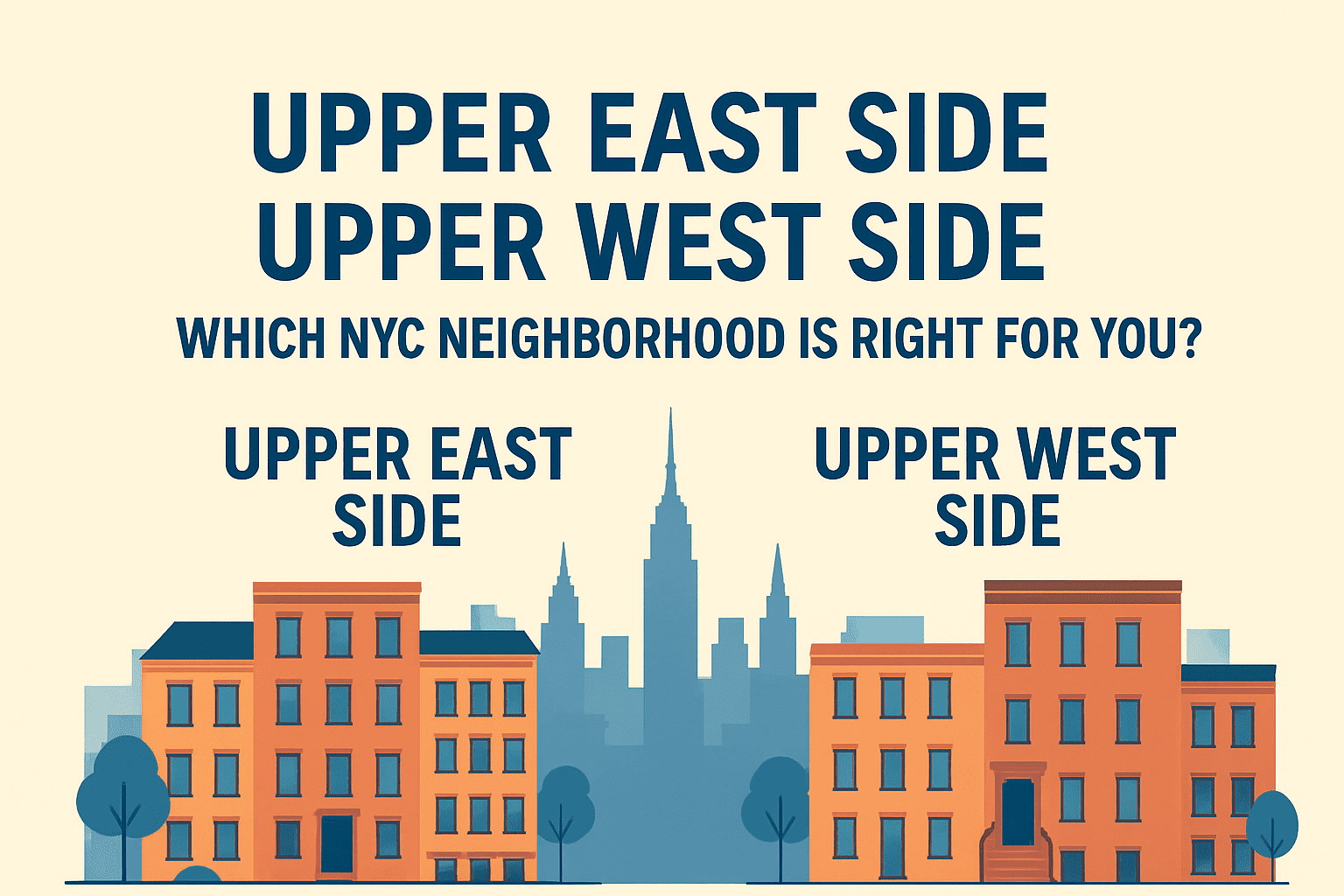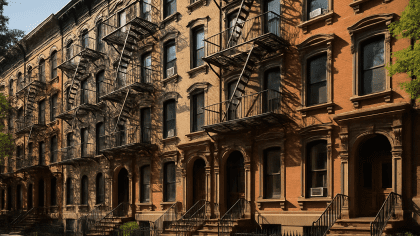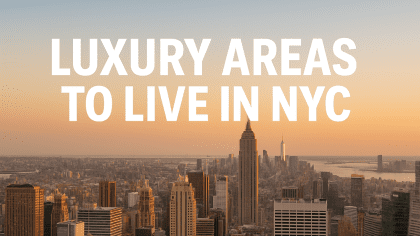New York City’s Manhattan borough is filled with iconic neighborhoods, but two areas often spark endless debate among locals and newcomers alike – the Upper East Side (UES) and the Upper West Side (UWS).
Both neighborhoods sit along Central Park, offering a lifestyle steeped in culture, convenience, and that classic Manhattan energy. Yet, they each have their own rhythm, charm, and character that cater to different personalities and lifestyles.
Whether you’re moving to NYC for a new job, starting college, or looking for your next dream apartment, understanding the key differences between these two Upper Manhattan powerhouses can help you make the right decision.
This in-depth guide explores everything from real estate and culture to nightlife and transportation, so you can find out which side of Central Park suits you best.
Quick Summary
Choosing between the Upper East Side and Upper West Side ultimately depends on your lifestyle, budget, and personal preferences. The Upper East Side is ideal for those who value sophistication, quiet streets, luxury shopping, and proximity to cultural landmarks like The Met. The Upper West Side, meanwhile, attracts those seeking a more relaxed, community-focused vibe filled with diversity, family-friendly parks, and easy access to entertainment.
Both neighborhoods share strong schools, convenient public transport, and Central Park access, making them two of the most desirable places to live in Manhattan.
Whether you’re drawn to the polished elegance of the East or the creative energy of the West, either side of Central Park offers a uniquely New York experience.
Historical Background of Upper East Side and Upper West Side
Both the Upper East Side and Upper West Side trace their origins back to the 19th century when Central Park’s completion transformed uptown Manhattan into a desirable residential area. Wealthy New Yorkers were drawn to the East Side, where elegant townhouses and luxury mansions became symbols of old money and social prestige.
On the other side, the Upper West Side developed later and was shaped by artistic and intellectual energy. The construction of the subway system in the early 1900s made it more accessible, attracting writers, actors, and academics who gave the area a more relaxed, creative vibe.
Architectural contrasts
The Upper East Side is known for its prewar co-ops, architecture, limestone mansions, and polished apartment buildings.
In contrast, the Upper West Side boasts a more eclectic architectural mix – brownstones, Beaux-Arts buildings, and prewar rentals – all exuding warmth and character.
While both neighborhoods feature historic charm, the East Side tends to feel more refined and traditional, while the West Side leans artistic and family-friendly.
Real Estate Market Comparison
Real estate on the Upper East Side typically commands higher prices, especially near Park Avenue and Fifth Avenue, where properties overlook Central Park.
Many apartments here are co-ops, requiring board approval and significant financial stability, which reflects the area’s long-standing exclusivity.
The Upper West Side offers a slightly more diverse housing market. While luxury condos exist, especially near Lincoln Center or Riverside Boulevard, the neighborhood also features more rental options and condo conversions.
Median rent prices are somewhat lower than the Upper East Side, making it attractive to younger professionals and families seeking space without sacrificing location.
Investment potential
Both neighborhoods maintain strong real estate values, but the Upper East Side often appeals to long-term investors due to its consistent demand from affluent residents.
The Upper West Side, however, has experienced faster appreciation in recent years as demand for more livable, family-oriented spaces has surged.
Demographics and Community Vibes
The Upper East Side has a reputation for elegance and affluence. Many residents are professionals, financiers, or long-established families with deep roots in the city. It’s quiet, polished, and exudes old-world sophistication.
The Upper West Side, by contrast, has a broader demographic mix – families, artists, academics, and professionals. The neighborhood feels slightly more laid-back, often described as liberal, intellectual, and community-driven. It’s the kind of place where you’ll find residents walking dogs, chatting in coffee shops, and attending local farmers’ markets.
Atmosphere and lifestyle
The UES is all about refinement – tree-lined streets, quiet evenings, and a sense of exclusivity. The UWS, on the other hand, feels alive with culture and creativity, offering a balance between urban excitement and neighborhood intimacy.
Dining and Culinary Scene
The Upper East Side’s dining scene reflects its polished image. Upscale restaurants like Daniel, Café Boulud, and Sushi Noz cater to fine dining enthusiasts, while smaller bistros and cafes provide sophisticated yet relaxed atmospheres. You’ll also find countless brunch spots and wine bars along Lexington and Second Avenues.
Flavorful diversity on the West Side
The Upper West Side’s food scene is more eclectic, with neighborhood favorites ranging from cozy diners to high-end eateries.
Jacob’s Pickles is a local institution, serving Southern comfort food, while RedFarm reinvents Chinese cuisine with a modern twist.
Broadway and Amsterdam Avenue are filled with lively bars, delis, and bakeries that reflect the area’s diverse community spirit.
Shopping and Retail Options
Shopping on the Upper East Side is a fashion lover’s dream. Madison Avenue is lined with high-end boutiques such as Chanel, Prada, and Hermès, while Bloomingdale’s anchors the neighborhood with its classic department store charm.
Residents also enjoy boutique fitness studios and luxury beauty salons scattered throughout the area.
Local and casual shopping
The Upper West Side leans toward independent boutiques and practical stores rather than luxury retail. You’ll find everything from cozy bookstores to organic grocery shops and weekend pop-up markets.
Columbus Avenue is a favorite for browsing artisan goods, while Lincoln Square offers access to retail chains and shopping centers.
Parks and Outdoor Spaces
Both neighborhoods border Central Park – one of the most beautiful green spaces in the world. The UES offers immediate access to quieter areas like The Reservoir and The Met Steps, while the UWS borders family-friendly attractions such as Strawberry Fields and The Great Lawn.
Riverside Park advantage
What sets the Upper West Side apart is Riverside Park – a scenic escape along the Hudson River that’s perfect for jogging, biking, or sunset picnics. It provides a level of tranquility that’s hard to match elsewhere in Manhattan.
Cultural Attractions and Museums
The Upper East Side is home to the Museum Mile, a stretch of world-renowned institutions including The Metropolitan Museum of Art, the Guggenheim, and The Frick Collection.
Art lovers and culture enthusiasts flock to this area for its unparalleled access to classical and contemporary masterpieces.
West Side’s music and performance
The Upper West Side counters with its own impressive, prestigious lineup of cultural landmarks. Lincoln Center hosts the New York Philharmonic, the Metropolitan Opera, and the New York City Ballet.
The American Museum of Natural History, located near Central Park West, is a favorite for families and tourists alike.
Schools and Education Facilities
Education is a major draw in both neighborhoods. The Upper East Side is home to elite private schools such as Dalton, Brearley, and Spence, while the Upper West Side boasts institutions like Trinity and Collegiate.
Public schools in both districts rank among the city’s best, making these neighborhoods especially popular among families with children.
Colleges and adult learning
The Upper West Side also houses Columbia University and Barnard College just north of the main neighborhood, infusing the area with an academic spirit and youthful energy.
Transportation and Accessibility
The Upper East Side is served primarily by the 4, 5, and 6 subway lines along Lexington Avenue, as well as the newer Q line along Second Avenue. While these trains provide fast access to Midtown and Downtown, east-west transportation can sometimes be limited.
The Upper West Side benefits from the 1, 2, and 3 trains along Broadway and the B and C lines along Central Park West.
With better cross-town bus routes and easier access to the West Side Highway, it’s often considered slightly more convenient for commuters heading to Midtown or Downtown.
Walkability
Both neighborhoods are extremely walkable, but the Upper West Side tends to have more pedestrian-friendly streets with cafes, bookstores, and open spaces that encourage a leisurely lifestyle.
Nightlife and Entertainment
Nightlife on the Upper East Side is quieter but elegant. You’ll find upscale cocktail lounges, rooftop bars, and intimate wine spots perfect for after-work drinks or romantic nights out.
Vibrant energy on the West Side
The Upper West Side is livelier after dark, offering a mix of casual pubs, comedy clubs, and live music venues. Jazz at Lincoln Center is a must-visit, while neighborhood bars like The Dead Poet bring locals together for relaxed, friendly evenings.





